The scalp, often an overlooked terrain in the vast landscape of hair care, serves as the very ground from which our strands ascend. For Roothea, understanding the scalp is not merely a clinical pursuit; it is a deep, reverent dialogue with the origins of our hair, a recognition of its foundational role in overall well-being, and a profound connection to the rich tapestry of textured hair heritage. This exploration of scalp care delves into its biological underpinnings, its historical resonance in diverse cultural practices, and its enduring significance in shaping identity and self-perception across generations.
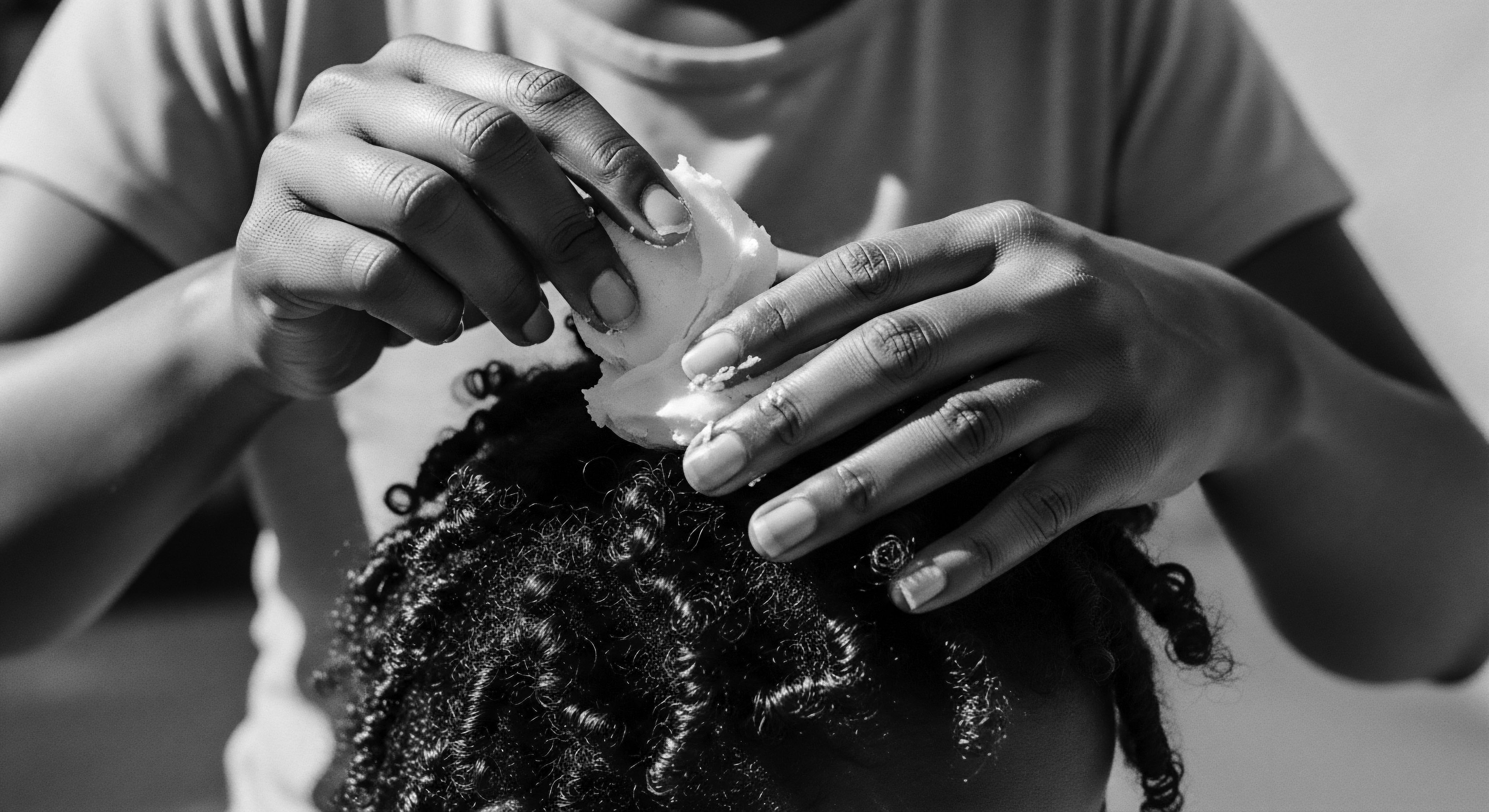
Fundamentals
The fundamental explanation of scalp care begins with acknowledging the scalp as a living extension of our skin, a vital ecosystem supporting hair growth. This delicate expanse of tissue, rich with blood vessels, nerve endings, and sebaceous glands, acts as the primary anchor for each individual hair strand. Its fundamental role is to provide a nourishing environment for hair follicles, the tiny pockets from which hair emerges, ensuring they receive the necessary nutrients and protection to produce healthy, vibrant hair. Without attentive care, the scalp can experience dryness, irritation, or an accumulation of debris, all of which can hinder optimal hair development.
Ancestral wisdom, passed down through generations, understood this intrinsic connection between a healthy scalp and flourishing hair long before modern science articulated the precise biological mechanisms. Many traditional practices centered on the scalp as the source of hair’s vitality, recognizing that its condition directly influenced the strength, appearance, and overall vigor of the hair. This elemental understanding formed the bedrock of early hair care rituals, prioritizing scalp health as a prerequisite for beauty and well-being.
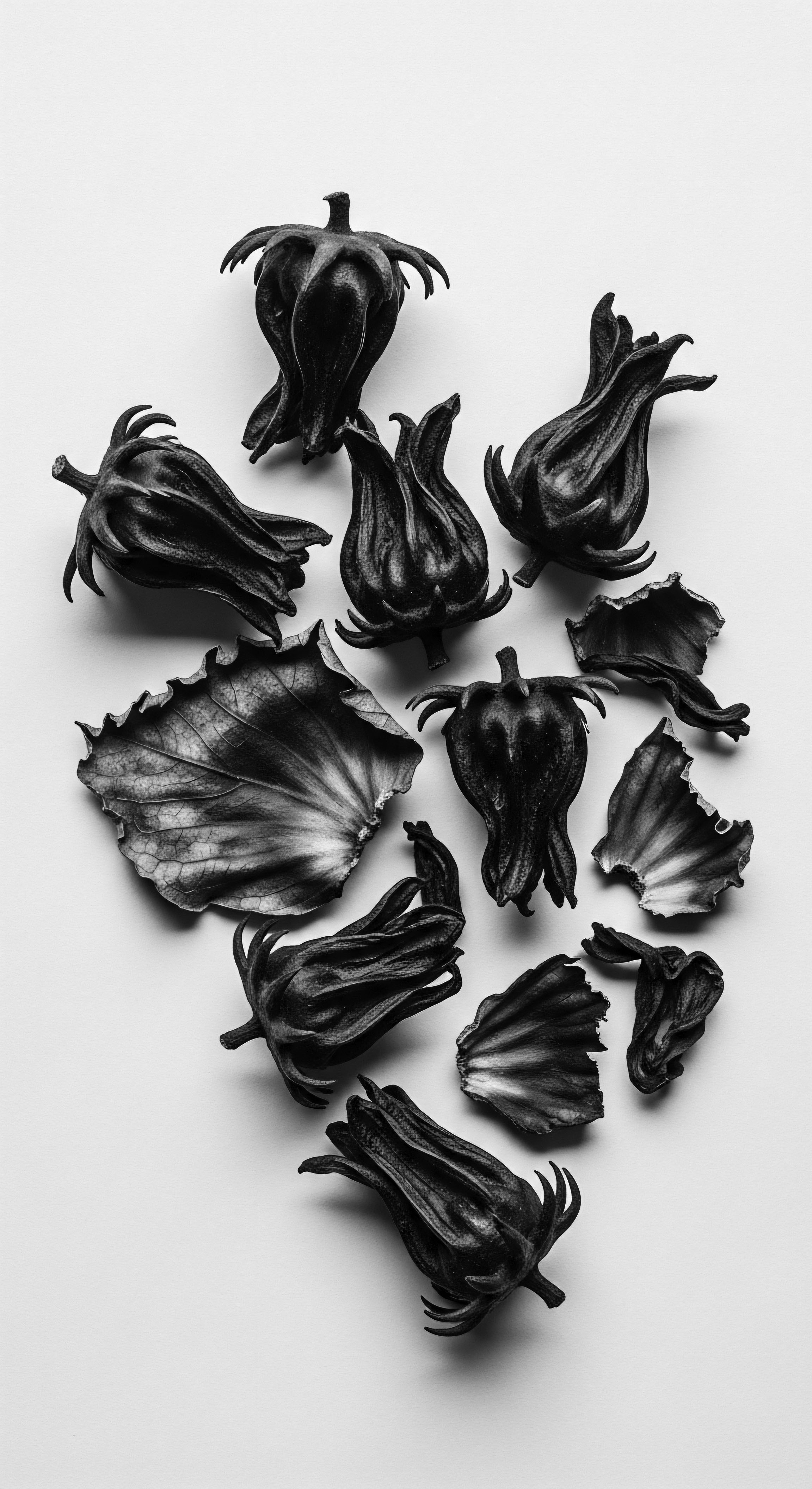
The Scalp’s Basic Functions
At its most basic level, the scalp performs several key biological functions essential for hair:
- Protection ❉ It forms a protective barrier for the skull, shielding it from physical trauma, environmental aggressors, and microbial invasion.
- Nourishment ❉ Blood vessels within the scalp deliver oxygen and nutrients to the hair follicles, fueling hair growth and maintaining the health of existing strands.
- Sebum Production ❉ Sebaceous glands on the scalp secrete sebum, a natural oil that lubricates both the scalp and hair, providing a protective coating and preventing excessive dryness.
- Temperature Regulation ❉ The scalp plays a role in regulating body temperature through sweating and heat dissipation.
Scalp care, at its core, is the dedicated practice of tending to the living skin of the head, recognizing its profound connection to hair health and overall well-being.
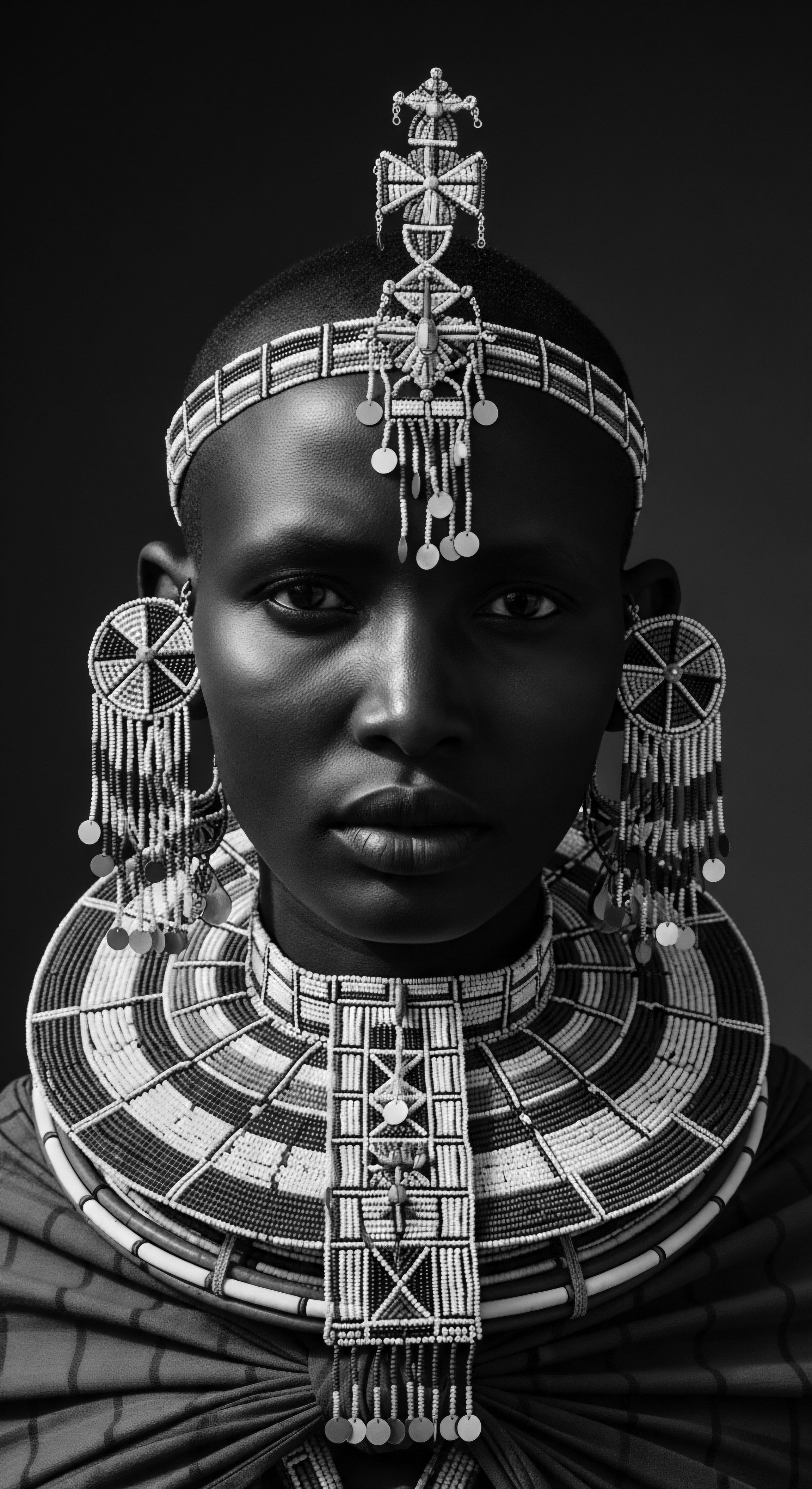
Early Echoes of Care
From ancient times, communities around the globe, particularly those with textured hair, intuitively understood the importance of scalp hygiene and nourishment. Their practices, though varied, shared a common aim ❉ to maintain a balanced scalp environment. This included cleansing with natural soaps or clays, applying plant-based oils and butters to soothe and protect, and engaging in gentle manipulation through combing and braiding. These early approaches, rooted in observation and inherited knowledge, laid the groundwork for what we now conceptualize as scalp care.
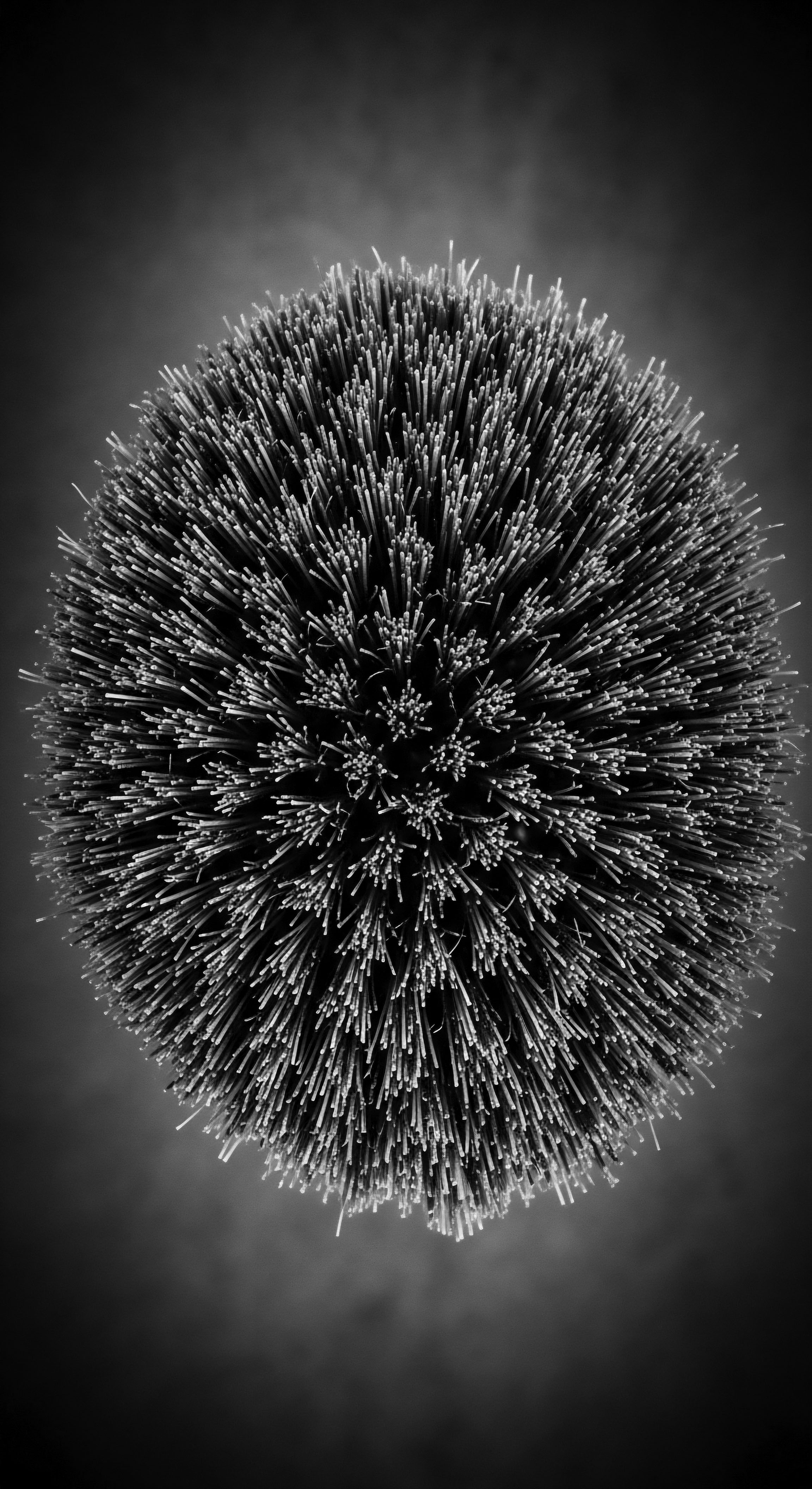
Intermediate
Moving beyond the rudimentary, an intermediate understanding of scalp care acknowledges its complex interplay with textured hair’s unique characteristics and the specific challenges that arise from these distinctions. Textured hair, with its diverse curl patterns ranging from loose waves to tight coils, often presents a different set of needs for the scalp compared to straighter hair types. The helical structure of coiled strands means natural oils produced by the scalp struggle to travel down the hair shaft, frequently leading to dryness in the hair itself, even if the scalp produces sufficient sebum. This necessitates a more deliberate and informed approach to scalp care for textured hair.
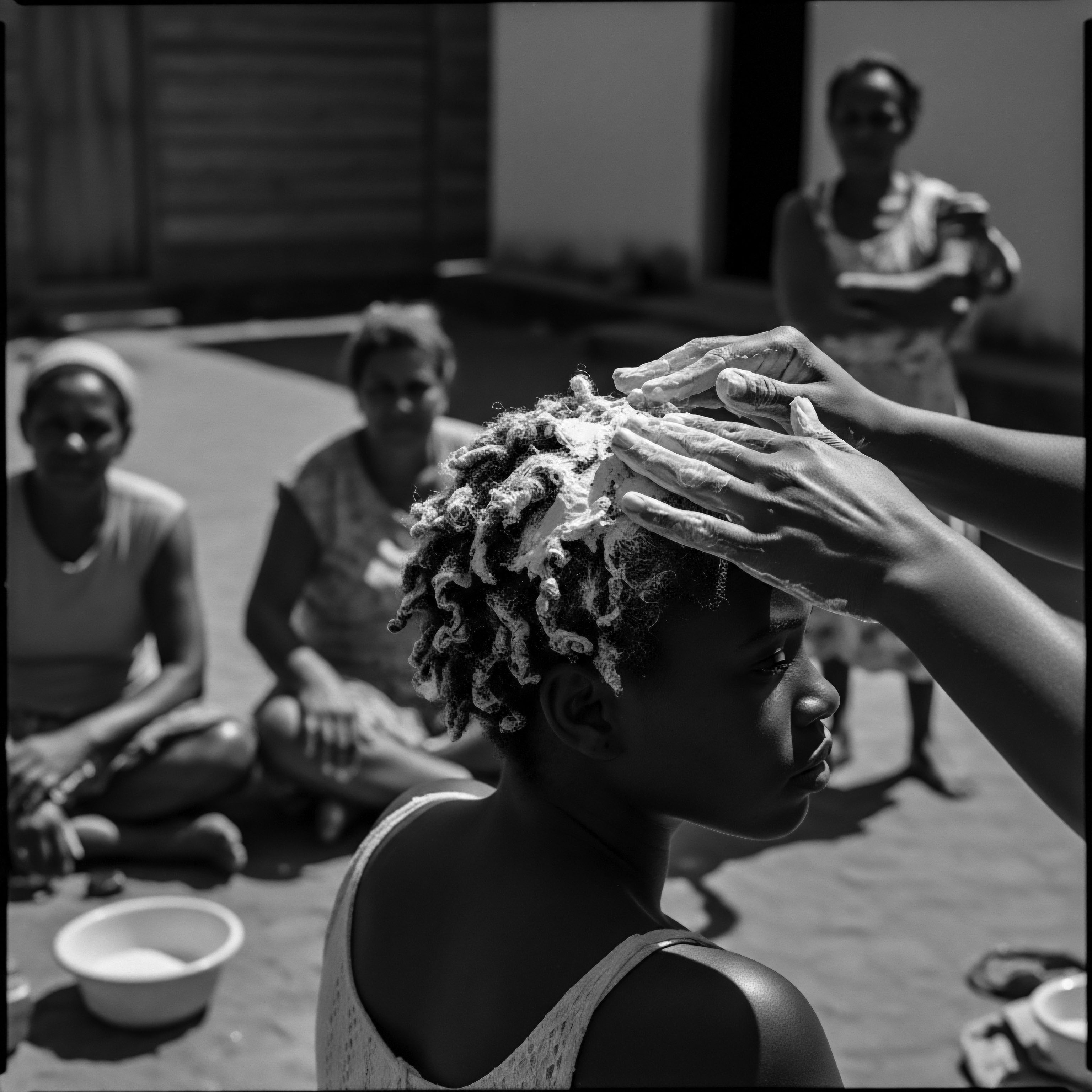
Textured Hair’s Distinct Scalp Considerations
The very architecture of textured hair influences scalp health. The dense coiling can create more opportunities for product accumulation at the scalp level, particularly with thicker creams and butters often used for moisture retention on the hair strands. This buildup, if not regularly and gently removed, can lead to blocked follicles, irritation, and an environment conducive to microbial imbalances. Conversely, the propensity for dryness in textured hair can sometimes lead to an over-application of oils directly to the scalp, which, while well-intentioned, might paradoxically hinder scalp respiration or create a film that traps debris.
Traditional African and diasporic communities, with their profound ancestral knowledge of hair, developed sophisticated methods that intuitively addressed these unique considerations. Their care practices for the scalp were deeply interwoven with daily life, social rituals, and spiritual reverence, viewing hair not just as an adornment but as a powerful symbol of identity, status, and connection to heritage. These practices often involved a symbiotic relationship with the earth’s offerings, utilizing ingredients that cleansed, soothed, and fortified the scalp.
The practice of scalp care for textured hair is a testament to ancestral ingenuity, a legacy of adapting natural resources to the unique needs of coiled strands, ensuring vitality from the root upwards.
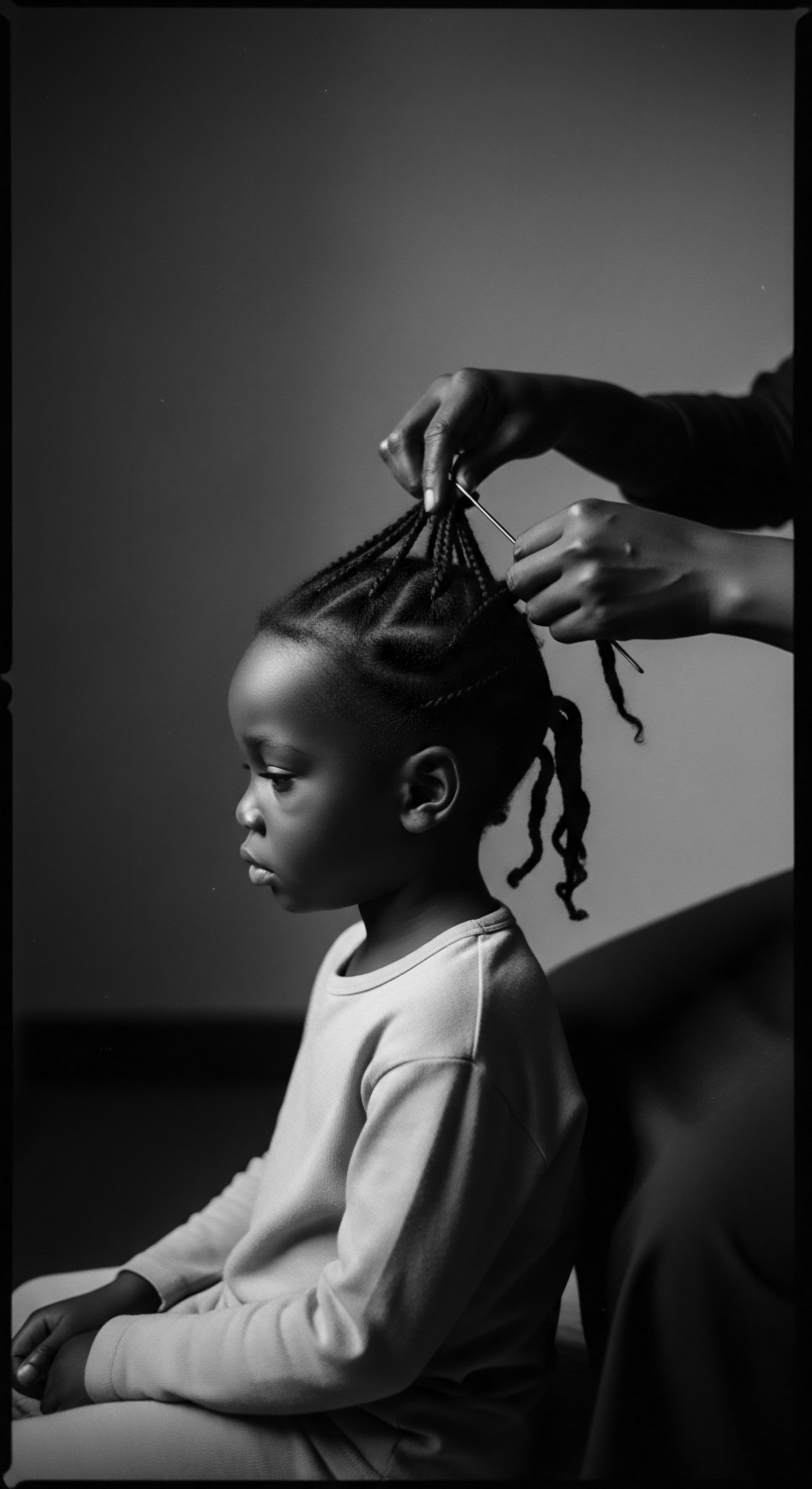
Living Traditions of Care
Across the African continent and its diaspora, various communities developed distinctive scalp care rituals. These were not merely about hygiene; they were acts of communal bonding, intergenerational teaching, and spiritual connection. The rhythmic motions of braiding, the shared application of oils, and the collective celebration of healthy hair fostered a sense of belonging and reinforced cultural identity. For example, the meticulous care given to children’s scalps and nascent strands was a way of nurturing their physical and cultural roots simultaneously.
Consider the use of specific plant-based ingredients, many of which are now being validated by modern scientific inquiry for their antimicrobial, anti-inflammatory, or moisturizing properties. Shea butter, sourced from the shea tree, served as a foundational moisturizer for both skin and scalp across West Africa, valued for its emollient qualities that helped combat dryness inherent to many textured hair types. Similarly, various herbs were steeped to create rinses, offering gentle cleansing and soothing properties to the scalp, often without stripping its natural protective oils. These practices were not random acts; they represented generations of empirical observation and refinement.
| Ancestral Ingredient Shea Butter (Vitellaria paradoxa) |
| Traditional Application for Scalp Nourishing, protecting from dryness, soothing irritation. |
| Contemporary Scientific Link to Scalp Health Rich in fatty acids and vitamins, offering deep moisturization and anti-inflammatory effects. |
| Ancestral Ingredient African Black Soap (Ose Dudu) |
| Traditional Application for Scalp Gentle cleansing, addressing scalp conditions like dandruff. |
| Contemporary Scientific Link to Scalp Health Contains plantain skins, cocoa pods, and palm oil, providing natural exfoliation and antimicrobial properties. |
| Ancestral Ingredient Aloe Vera (Aloe barbadensis miller) |
| Traditional Application for Scalp Soothing, cooling, hydrating inflamed scalps. |
| Contemporary Scientific Link to Scalp Health Polysaccharides and glycoproteins offer anti-inflammatory, moisturizing, and healing benefits. |
| Ancestral Ingredient Henna (Lawsonia inermis) |
| Traditional Application for Scalp Scalp conditioning, strengthening hair, addressing fungal issues. |
| Contemporary Scientific Link to Scalp Health Possesses antifungal and antibacterial properties, contributing to a balanced scalp microbiome. |
| Ancestral Ingredient These ancestral remedies stand as a testament to the enduring wisdom of Black and mixed-race hair traditions, providing foundational insights for modern scalp care. |
The care of the scalp, in this context, was an integral part of the broader system of hair grooming, which often involved intricate styling. Braiding, twisting, and coiling were not just aesthetic choices; they often served a protective function, shielding the delicate hair strands and the scalp from environmental stressors. These styles, which could remain in place for extended periods, necessitated a scalp that was well-prepared and healthy to prevent discomfort or damage. The preparatory rituals of cleansing, oiling, and massaging the scalp before styling were as important as the styling itself, ensuring the longevity and health of the protective styles.
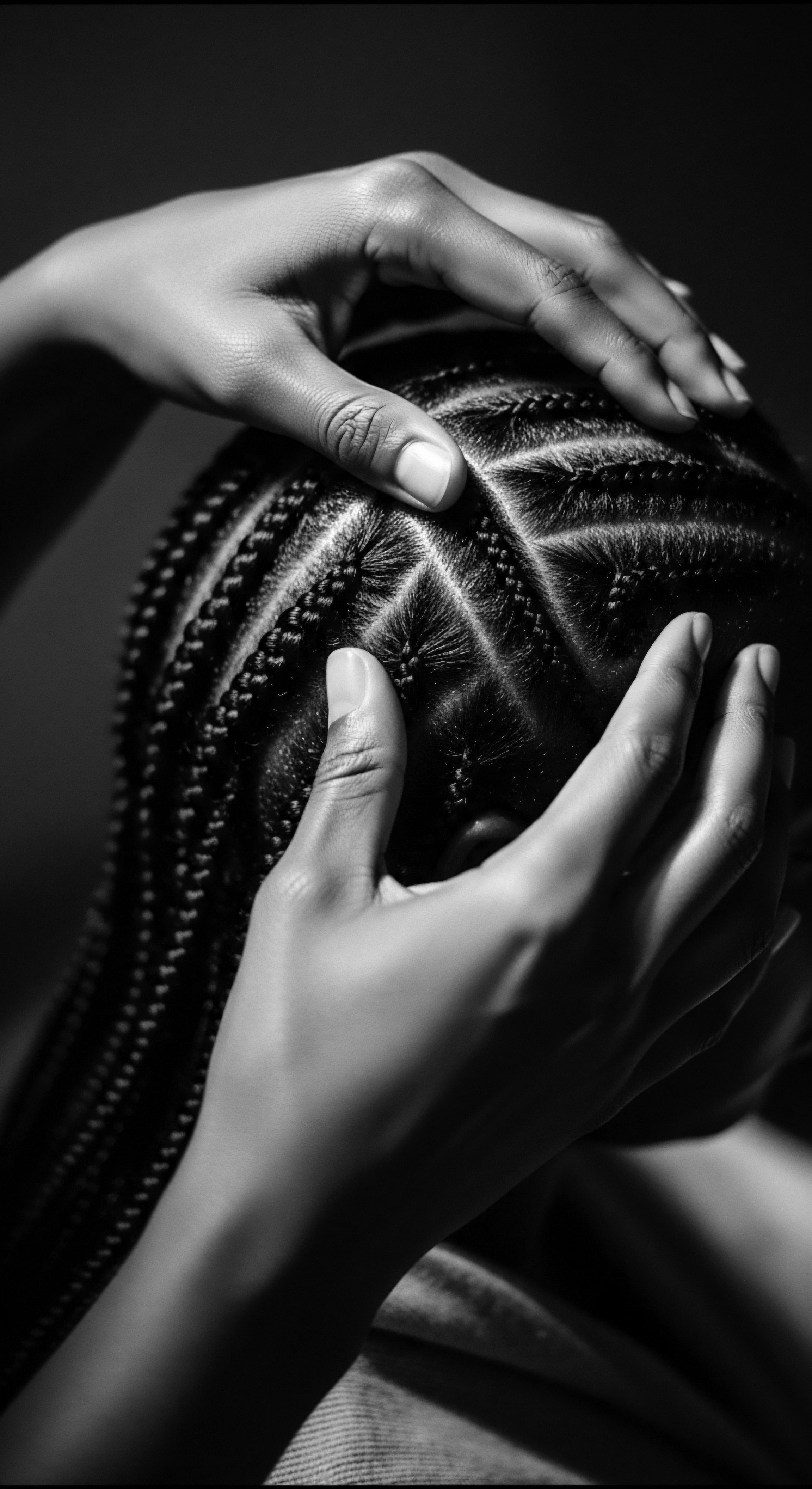
Academic
From an academic standpoint, the interpretation of Scalp Care transcends its superficial definition, becoming a multidisciplinary inquiry that bridges dermatological science, ethnobotanical research, and the profound socio-cultural dynamics of textured hair heritage. This perspective recognizes scalp care not merely as a set of practices, but as a historically situated concept, continually reshaped by scientific discovery, societal pressures, and the enduring resilience of ancestral wisdom. The delineation of scalp care at this level demands a rigorous examination of its biological complexities and its deeply embedded cultural significance, particularly within Black and mixed-race communities.
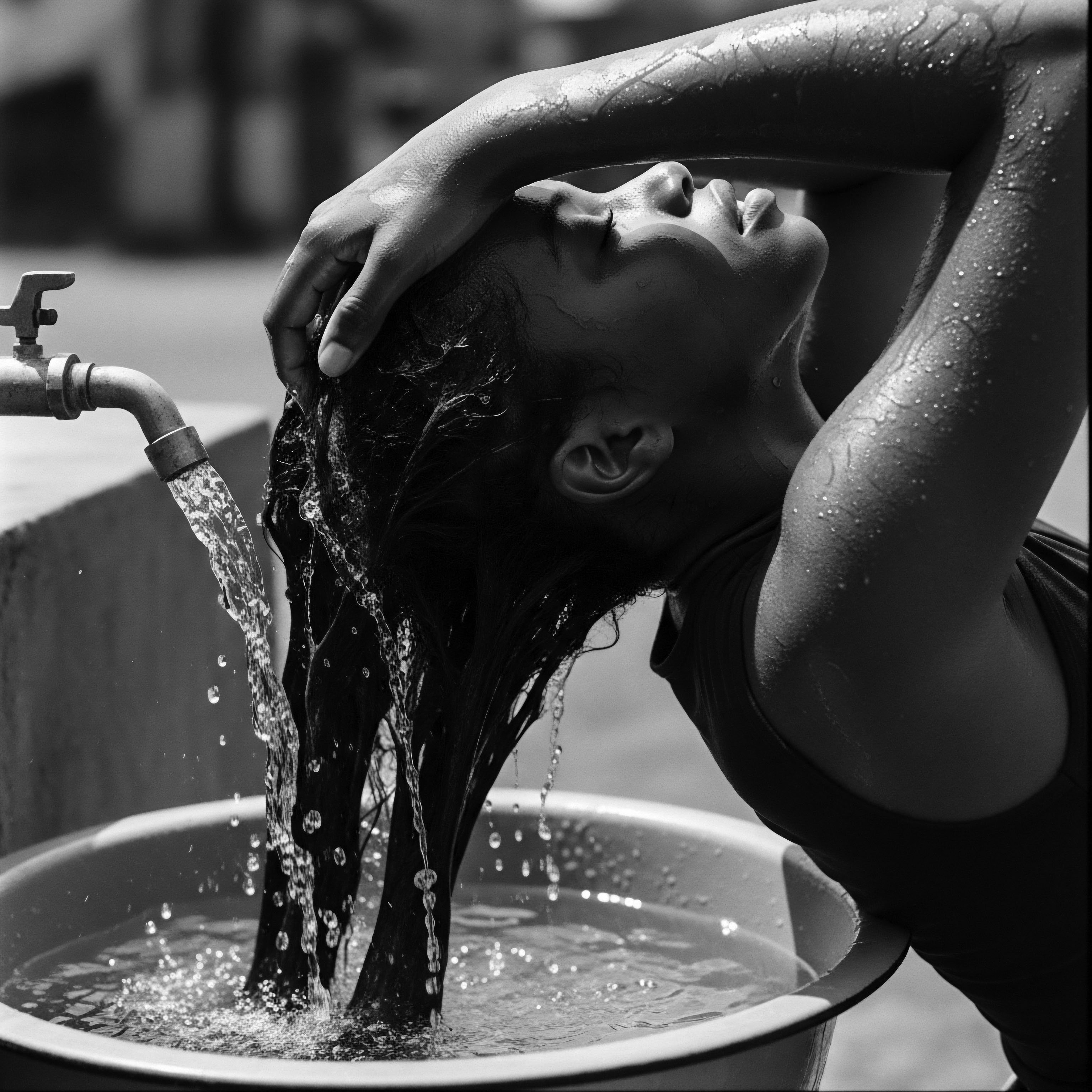
A Scientific Delineation of Scalp Health
The scalp, from a biological lens, is a complex anatomical structure comprising multiple layers of skin, hair follicles, sebaceous glands, sweat glands, and a rich network of blood vessels and nerves. Its integrity is paramount for hair growth, as the hair follicle, a miniature organ responsible for producing the hair shaft, is intimately connected to the scalp’s health. The meaning of scalp care here is the maintenance of a balanced microbiome, optimal cellular turnover, and robust follicular function.
Disruptions to this delicate equilibrium, whether from environmental factors, genetic predispositions, or improper care practices, can manifest as various dermatoses, including dandruff, seborrheic dermatitis, folliculitis, and different forms of alopecia. For textured hair, the unique helical structure of the hair shaft and its elliptical follicle shape contribute to its distinctive appearance and also influence its vulnerability to certain conditions, making the underlying scalp’s condition even more significant.
The physical act of care, therefore, extends beyond simple cleansing. It involves thoughtful product selection that respects the scalp’s pH, minimizes irritation, and avoids ingredients that can lead to buildup or inflammation. It encompasses gentle manipulation, ensuring blood circulation and preventing mechanical stress on the hair follicles.
Furthermore, it considers the internal factors influencing scalp health, such as nutrition and stress, thereby connecting topical applications to a broader systemic wellness framework. The explication of scalp care, academically, is a holistic one, integrating internal and external influences on its vitality.
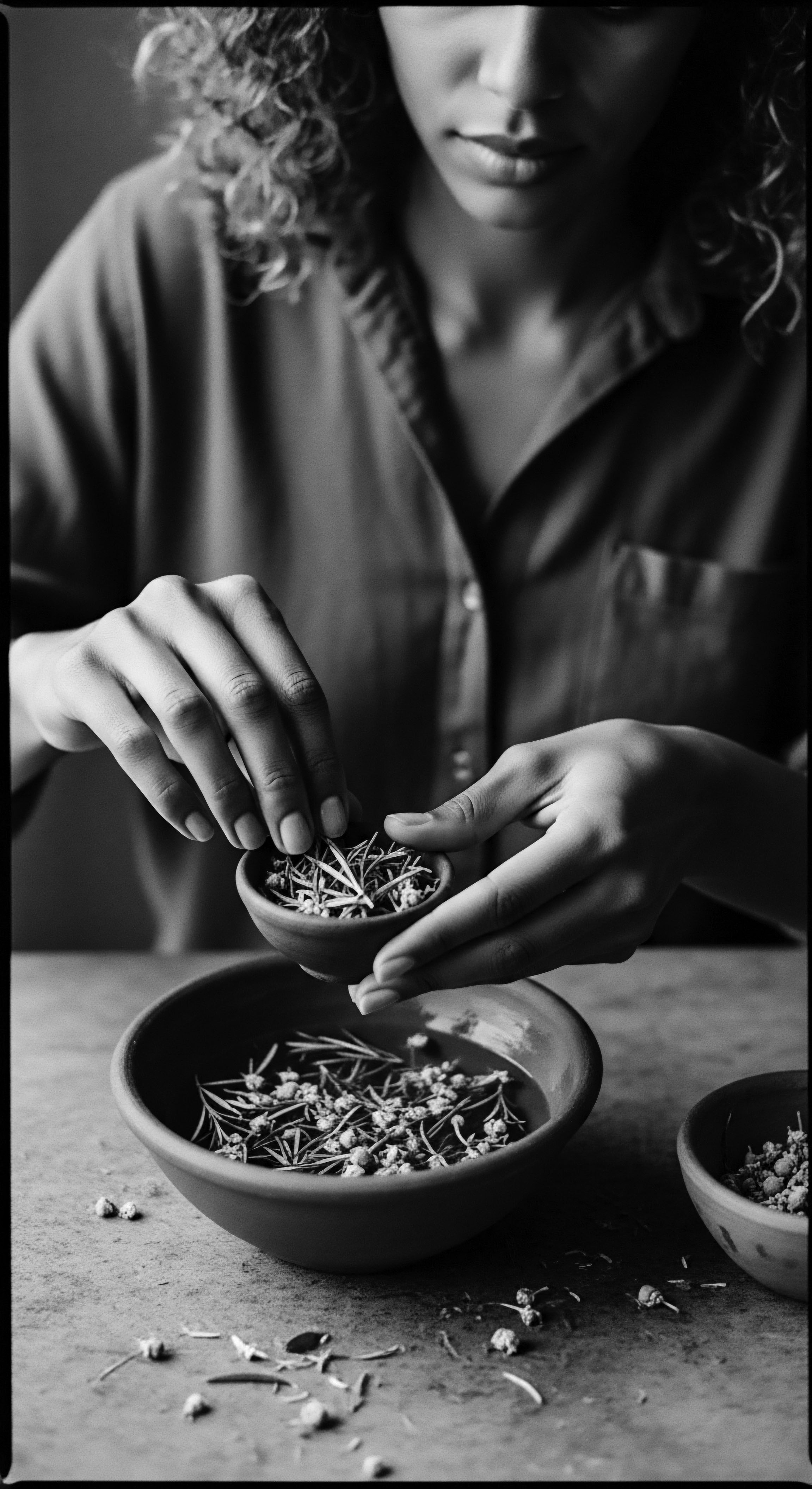
The Interconnectedness of Identity and Scalp Care in Heritage
The historical and cultural context of scalp care for Black and mixed-race individuals reveals a complex interplay of oppression, adaptation, and profound cultural affirmation. Hair, and by extension the scalp, has historically served as a potent symbol of identity, status, and resistance within African and diasporic communities. Prior to the transatlantic slave trade, intricate hairstyles and meticulous scalp care rituals communicated lineage, marital status, age, and spiritual beliefs. The communal act of hair grooming was a social institution, fostering bonds and transmitting ancestral knowledge.
The forced removal of Africans from their homelands during slavery initiated a brutal assault on their cultural identity, often beginning with the shaving of heads—a dehumanizing act that severed spiritual and communal ties. Denied access to traditional tools and ingredients, enslaved people adapted, using what was available to maintain some semblance of hair and scalp hygiene, often under harsh conditions that led to widespread scalp diseases. This period marked a tragic shift, where the very act of caring for one’s scalp became a quiet act of defiance and a desperate attempt to preserve a connection to a lost heritage.
Following emancipation, and throughout the 20th century, societal pressures to conform to Eurocentric beauty standards led to the widespread adoption of chemical hair straightening products, known as relaxers, within Black communities. These products, designed to alter the natural coil pattern, often contained harsh chemicals that posed significant risks to scalp health. Studies have documented the high prevalence of relaxer use among Black women; for instance, one study found that 94% of African-American women surveyed under the age of 45 had used hair relaxers, a rate significantly higher than other racial groups (Stiel et al. 2016).
This widespread usage, driven by a desire for social acceptance and economic opportunity, came at a cost. Many women experienced chemical burns, scalp irritation, and subsequent hair breakage or loss.
Research has increasingly illuminated the long-term health consequences linked to these chemical exposures. For example, a study published in the International Journal of Cancer in 2019 suggested a correlation between frequent use of chemical hair straighteners and a higher risk of breast cancer. Furthermore, a 2012 study in the American Journal of Epidemiology (Coogan et al.
2012) in the Black Women’s Health Study found that “hair relaxer use was associated with an increased risk of uterine leiomyomata,” or fibroids, with positive trends observed for frequency and duration of use, and the number of burns experienced. These findings underscore how historical and societal pressures, particularly the imposition of beauty ideals, have profoundly impacted the physical health of Black women’s scalps and bodies, creating health disparities that continue to be investigated.
The contemporary natural hair movement represents a powerful reclamation of ancestral aesthetics and a conscious decision to prioritize scalp and hair health over imposed beauty norms. This movement has catalyzed a renewed interest in traditional ingredients and practices, fostering a deeper connection to cultural roots and a more respectful relationship with textured hair. The meaning of scalp care in this modern context thus expands to encompass self-acceptance, cultural pride, and a form of healing from historical trauma. It signifies a conscious choice to nurture the physical root, recognizing its symbolic power as the source of identity and resilience.
The interpretation of scalp care, therefore, is not static. It is a dynamic concept, reflecting the ongoing dialogue between biological realities, historical injustices, and the unwavering spirit of communities determined to define their own standards of beauty and wellness. The scholarly understanding of scalp care acknowledges these layered meanings, positioning it as a critical component of dermatological health, cultural anthropology, and the broader narrative of Black and mixed-race identity.
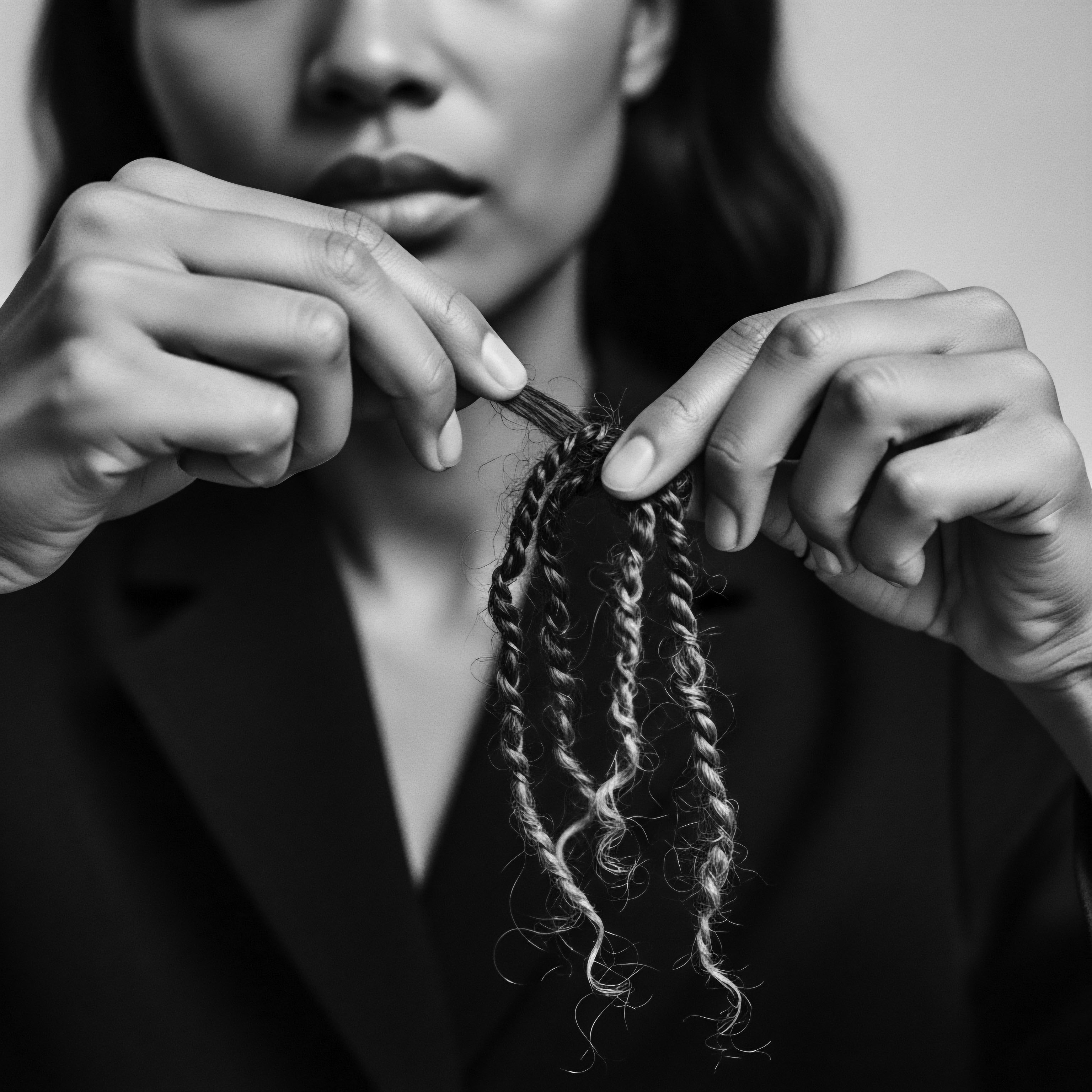
Historical Tools and Rituals for Scalp Care
- Combs and Picks ❉ Ancient combs, often crafted from wood, bone, or ivory, were used not only for detangling but also for stimulating the scalp and distributing natural oils.
- Herbal Rinses and Infusions ❉ Various plant materials were steeped in water to create rinses that cleansed, soothed, and imparted medicinal properties to the scalp.
- Oils and Butters ❉ Shea butter, palm oil, and various plant oils were applied directly to the scalp to moisturize, protect, and provide a healthy sheen.
- Clay and Ash Washes ❉ Certain clays and plant ashes were mixed with water to form cleansing pastes, offering gentle exfoliation and detoxification for the scalp.
- Communal Grooming Sessions ❉ Hair care was often a shared activity, reinforcing social bonds and transmitting knowledge from elder to younger generations.
| Aspect of Care Primary Goal |
| Traditional/Ancestral Era (Pre-19th Century) Holistic health, cultural expression, spiritual connection, communal bonding. |
| Industrial/Modern Era (19th Century – Mid-20th Century) Aesthetic conformity (straightness), convenience, perceived "manageability." |
| Aspect of Care Cleansing Agents |
| Traditional/Ancestral Era (Pre-19th Century) Natural soaps, clays, herbal infusions, plant ashes. |
| Industrial/Modern Era (19th Century – Mid-20th Century) Early commercial shampoos, often harsh, followed by lye-based chemical relaxers. |
| Aspect of Care Moisturizing Agents |
| Traditional/Ancestral Era (Pre-19th Century) Shea butter, coconut oil, palm oil, animal fats, various plant extracts. |
| Industrial/Modern Era (19th Century – Mid-20th Century) Petroleum jelly, mineral oils, often heavy and occlusive; early hair greases. |
| Aspect of Care Tools Utilized |
| Traditional/Ancestral Era (Pre-19th Century) Hand-carved combs, fingers, natural fibers for wraps. |
| Industrial/Modern Era (19th Century – Mid-20th Century) Hot combs, pressing irons, chemical relaxer kits. |
| Aspect of Care Underlying Philosophy |
| Traditional/Ancestral Era (Pre-19th Century) Reverence for natural texture, ancestral wisdom, communal well-being. |
| Industrial/Modern Era (19th Century – Mid-20th Century) Assimilation, adherence to Eurocentric beauty standards, individual pursuit of "good hair." |
| Aspect of Care This table illustrates a significant shift in scalp care paradigms, reflecting changing societal values and the commercialization of beauty, often at the expense of inherent scalp health for textured hair. |
The historical imposition of beauty standards on textured hair, particularly the drive for straightness, reveals how societal pressures can lead to practices detrimental to scalp health, emphasizing the importance of informed, heritage-aligned care.
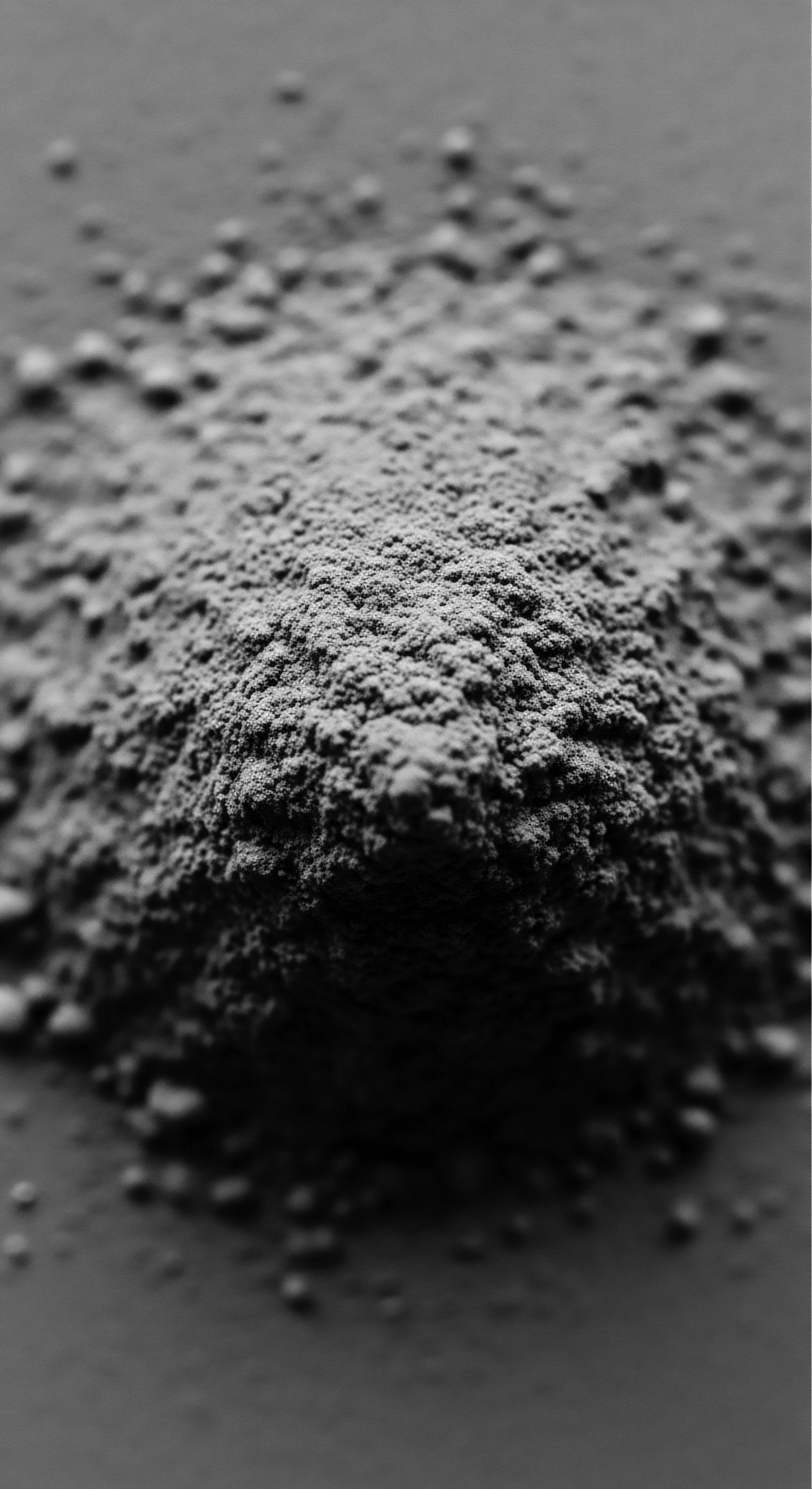
Reflection on the Heritage of Scalp Care
The journey through the definition of scalp care, from its elemental biological blueprint to its complex cultural narratives, brings us to a contemplative space. The enduring significance of scalp care within the context of textured hair is not merely a chronicle of past practices or a summary of current scientific understanding. It is a living, breathing testament to the profound connection between the earth, our bodies, and our collective human story. The scalp, as the very genesis of our hair, holds within its delicate surface the echoes of ancient wisdom, the resilience forged through struggle, and the boundless potential for future expressions of identity.
The “Soul of a Strand” ethos at Roothea compels us to see each coil and curve as a repository of memory, a physical manifestation of heritage. When we tend to the scalp, we are not simply addressing a physiological need; we are engaging in an act of reverence, honoring the ancestors who meticulously cared for their hair with natural elements, passing down knowledge through touch and oral tradition. We are acknowledging the generations who, despite immense adversity, found ways to preserve and celebrate their hair, even when it was deemed “unruly” or “unprofessional” by dominant societal norms. The scars of historical oppression, sometimes literally etched onto the scalp through harsh chemical treatments, remind us of the battles fought and the resilience displayed in the pursuit of self-definition.
As we look forward, the continued evolution of scalp care for textured hair stands as a powerful statement. It is a declaration that self-care is a form of cultural preservation, a reclaiming of autonomy over one’s body and image. The contemporary movement towards embracing natural hair textures is not just a trend; it is a profound societal shift, a collective awakening to the beauty and strength inherent in our original design. This awakening inspires a return to gentle, nourishing practices that prioritize the health of the scalp, drawing inspiration from the wellspring of ancestral knowledge while integrating the advancements of modern science.
The future of scalp care, viewed through Roothea’s lens, invites us to foster a deeper, more intuitive relationship with our hair’s source. It encourages us to listen to the whispers of our heritage, to understand the nuanced needs of our unique textures, and to participate in a continuous dialogue of care that celebrates diversity, affirms identity, and nurtures well-being from the roots outward. This ongoing conversation, grounded in respect for the past and hope for the future, ensures that the meaning of scalp care remains vibrant, a living library entry that continues to grow and inspire.
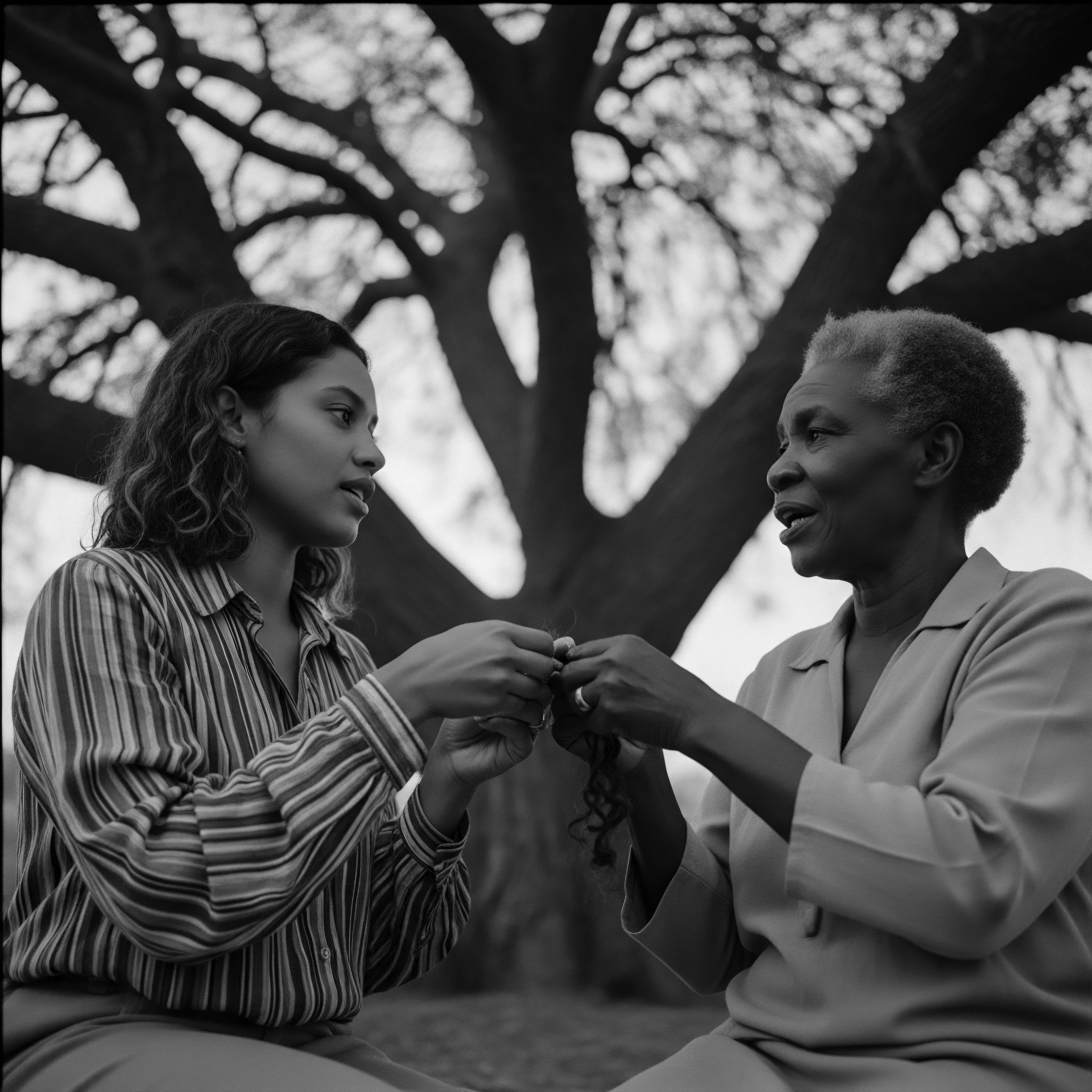
References
- Byrd, A. D. & Tharps, L. D. (2014). Hair Story ❉ Untangling the Roots of Black Hair in America. St. Martin’s Griffin.
- Coogan, P. F. et al. (2012). Hair relaxer use and risk of uterine leiomyomata in African-American women. American Journal of Epidemiology, 175(3), 224-232.
- Fongnzossie, E. et al. (2018). Ethnobotanical survey of medicinal plants used in cosmetics in Kousseri, Cameroon. Journal of Ethnopharmacology, 220, 25-34.
- Mbilishaka, A. (2018). PsychoHairapy ❉ The Psychology of Black Hair and Mental Health in Hair Care Settings. Psi Chi Journal of Psychological Research, 23(3), 208-217.
- Ndhlovu, N. et al. (2019). Ethnobotanical survey of medicinal plants used for skin care by Vhavenda women in Limpopo, South Africa. South African Journal of Botany, 123, 150-158.
- Prabhu, K. et al. (2021). Ethnobotanical survey of medicinal plants used for hair problems by the Pachamalai tribe of Tamil Nadu, India. Journal of Medicinal Plants Studies, 9(3), 1-6.
- Rosado, S. (2003). The Grammar of Hair ❉ Hair and the African Diaspora. University of California Press.
- Stiel, L. et al. (2016). Study Raises Concerns Over Exposure of African-American Women to Hair, Scalp Care. Cancer Medicine, 5(1), 123-130.
- Thompson, E. (2009). Hair Story ❉ Untangling the Roots of Black Hair in America. St. Martin’s Griffin.
- Walker, A. (2001). Madam C. J. Walker ❉ Entrepreneur. Chelsea House Publishers.
